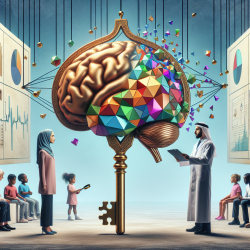The recent advancements in 2D organic materials are reshaping various fields, including online therapy and special education. As an online therapy practitioner, understanding and implementing these innovations can significantly enhance your service delivery. Let's dive into the research outcomes from the study titled "2D Organic Materials: Status and Challenges" and explore how they can benefit your practice.
Understanding 2D Organic Materials
2D organic materials combine the customizable nature of organic molecules with the unique properties of two-dimensional structures. This synergy results in materials with excellent optical and electrical properties, which are pivotal for developing advanced sensors, biomedical devices, and electronic applications.
Key Outcomes from the Research
The research article categorizes 2D organic materials into five types: Metal-Organic Frameworks (MOFs), Covalent-Organic Frameworks (COFs), Hydrogen-Bonded Organic Frameworks (HOFs), Perovskites, and Molecular Crystals. Each category has distinct preparation methods, properties, and applications.
1. Metal-Organic Frameworks (MOFs)
MOFs are porous crystalline materials formed by self-assembled metal ions and organic ligands. Their excellent properties make them suitable for electrocatalysis and energy storage applications.
2. Covalent-Organic Frameworks (COFs)
COFs are known for their structural multiplicity, high thermal stability, and permanent porosity. They are ideal for gas separation and storage applications, which can be beneficial for creating controlled environments in therapy settings.
3. Hydrogen-Bonded Organic Frameworks (HOFs)
HOFs exhibit high crystallinity and large specific surface areas, making them useful in fields requiring high stability and precision, such as biomedical devices.
4. Perovskites
Perovskites are promising for optoelectronics and spintronics due to their excellent electrical and optical properties. They can be integrated into therapeutic devices that require high efficiency and stability.
5. Molecular Crystals
Molecular crystals are lightweight, versatile, and chemically stable, making them suitable for advanced electronic technology and field-effect transistors.
Implementing Research Outcomes in Online Therapy
Integrating the advancements in 2D organic materials into online therapy can revolutionize your practice. Here are some practical steps:
- Advanced Sensors: Utilize sensors made from 2D organic materials to monitor patient vitals and environmental conditions, ensuring a controlled and safe therapy environment.
- Biomedical Devices: Incorporate devices with 2D organic materials to enhance the accuracy and efficiency of therapeutic interventions.
- Electronic Applications: Use electronic devices with improved performance and stability, facilitating seamless and effective therapy sessions.
Encouraging Further Research
Staying updated with the latest research is crucial for continuous improvement. Encourage your team to delve deeper into the applications of 2D organic materials and explore innovative ways to integrate them into your practice.To read the original research paper, please follow this link:
2D Organic Materials: Status and Challenges.










